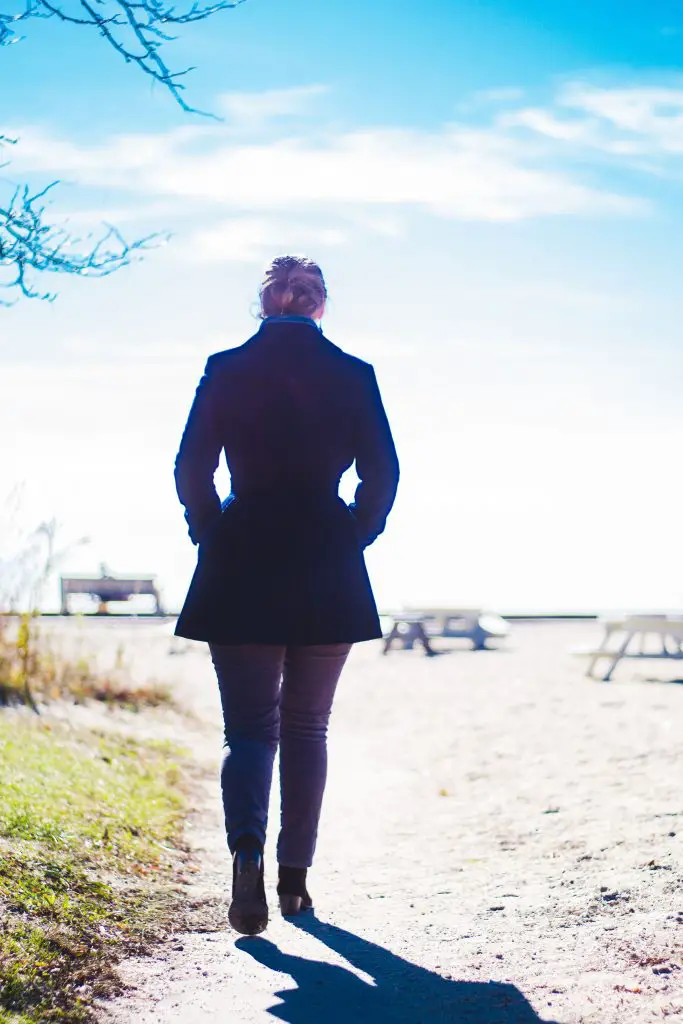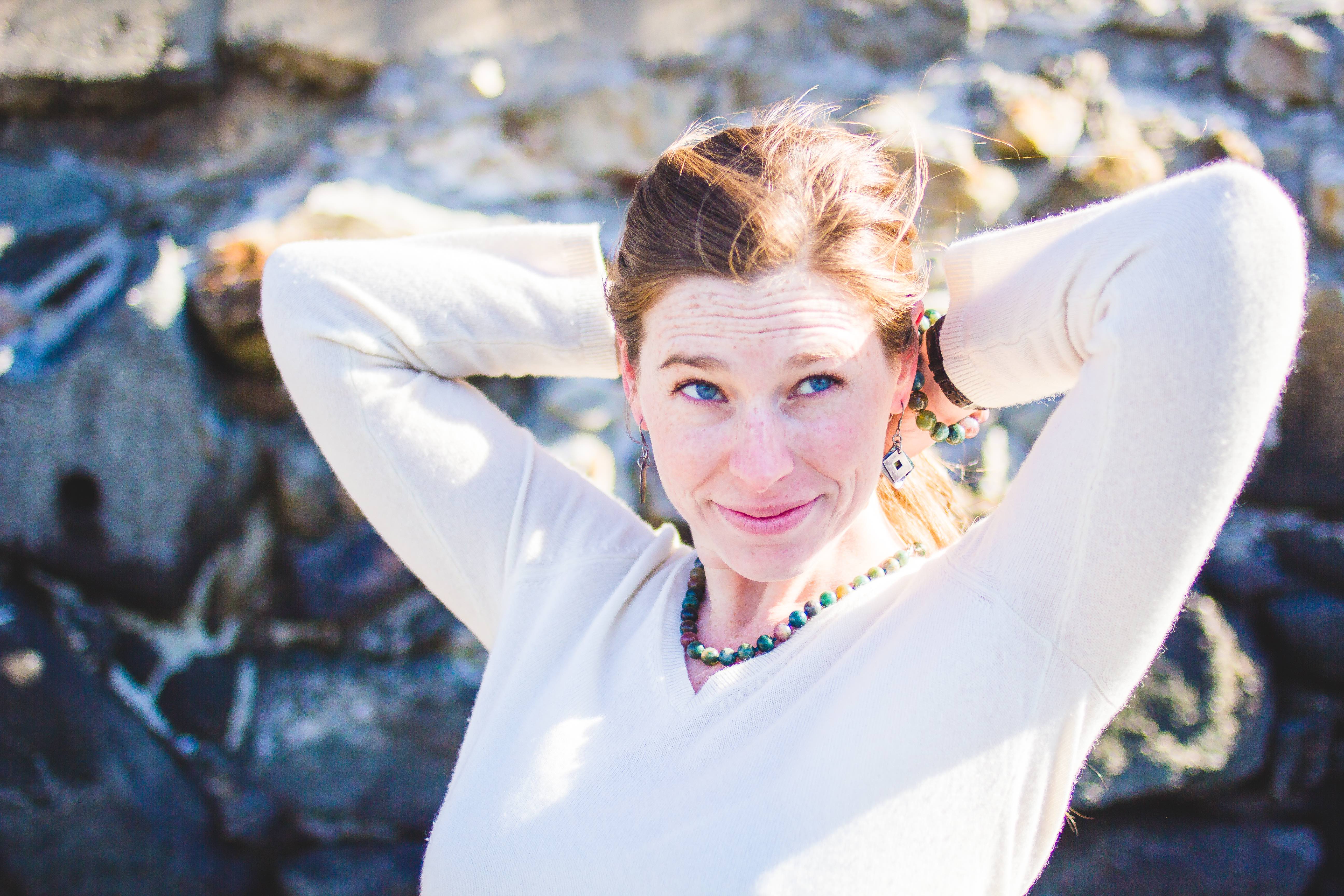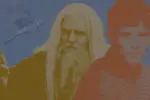“My name is Nicole, I’m twenty-two, I’m from a small town in the U.S. in the state of Connecticut and some time ago I heard a story that stuck in my mind about Genghis Khan,” begins the audio documentary. “About eight hundred years ago, when Khan’s armies were making their way across the ancient Persian world, a woman named Khoja Guliston retreated into the forest and turned herself into stone, rather than submit to the rape of his encroaching army.”
The voice narrating the thirty-minute broadcast, which aired on BBC Radio on October 2, comes from Nicole Bennett-Fite, a senior at Stanford University and creator of the audio documentary, entitled “The Woman of Stone.” Bennett-Fite had come across the obscure myth in the back alleys of a travel blog and was intrigued by its message and almost complete lack of academic study.
Determined to learn more about the apocryphal boulder, the Stanford senior applied for the “Journey of a Lifetime Award,” a scholarship presented by Britain’s Royal Geography Society, in partnership with IBG, that presents the annual winner with £5,000, or roughly $6,600, to embark on an “original and inspiring journey anywhere in the world.” She requested to travel to the stone and catalogue the experience, knowing that the recipient receives training in radio broadcasting from the BBC and is given the opportunity to record their experience for a BBC Radio 4 documentary.

Before applying for the scholarship, Bennett-Fite had been involved with verbal narrative as a member of the Stanford Storytelling Project, as well as a recipient of the Braden Storytelling Grant, which led to her interest in applying for the opportunity. Prior to receiving the award, under the mentorship of Jake Warga, a lecturer in the Program in Writing and Rhetoric and managing editor of the Stanford Storytelling Project podcast “State of the Human,” Bennett-Fite had produced a piece interviewing Jim Yount, the chief operating officer of the American Cryonics Society.
“I like radio because it feels more natural than video, as oral storytelling is our oldest form of communication and requires the listener to use their imagination in a similar way that reading does, which is very healthy,” Bennett-Fite told me in one of our conversations. “Also, you can be doing something else when you listen to radio, namely traveling, and not be missing out on the immediate world around you, as you do when you’re watching video. I like to be respectful of people’s time and mental space.”
As a result of her background in oral storytelling and her novel pitch, Bennett-Fite won the scholarship, becoming the first American to do so in the program’s sixteen-year history. She soon began putting together a plan together to visit the Woman of Stone in person, a proposal that meant a six-week journey, from May to June, to the Yagnob Valley, a remote area in Tajikistan, a Central Asian country just north of Afghanistan and west of China.
Due to the lack of infrastructure in the former Soviet country, though, as well as the remoteness of the Yagnob Valley in particular, reaching the shrine meant relying heavily on those who live in the area, many of whom she was unable to contact before arriving in the country, which meant she had to improvise many of her plans on location. Complicating matters further, the Connecticut native spoke little Tajik, the local language, and, due to the constraints of the travel budget, would be making the entire journey alone.
She flew into the country’s capital, Dushanbe, in May, and began looking for a translator. Shortly after, she began, by foot and donkey, crossing receding glaciers and skirting herds of goats, her journey to the Yagnob Valley.
Along the way, she compiled audio data detailing the journey, ensuring that she captured between five and seven minutes of recording every day, including personal audio journals, interviews with locals and recordings of moments and sounds that she found inspiring. Considering that the documentary is 28 minutes long, during the editing process, Bennett-Fite was forced by time constraints to cut everything but the most essential sound bites, the result of which is a riveting narrative without a single lull.
For example, in one emotional snippet, the Stanford senior has a conversation with a Tajik man who has two wives and eleven children between the two women. When Bennett-Fite asks, through the translator, why the husband took a second wife, he responds that his first wife, who is older than him, suggested that he take a younger wife because she could no longer do certain things as a result of her age.
Later, when she is alone with the older wife, Bennett-Fite asks her for her version of the story. Crying, the woman responds that she left her village to attend the funeral of her sister in a neighboring valley, and that when she returned, she found the younger woman living in her house.
As with many Tajik women, the wife had limited economic mobility, and, especially as an older woman, would have faced a bleak future had she chosen to leave her husband; so, she learned to live with the new woman. (In fact, because of Taijikistan’s lack of economic opportunity, much of the male population works seasonally in Russia, leaving behind their wives.
While abroad, the men often take up second wives and start second families, sometimes divorcing their Tajik wives by text or email.) Bennett-Fite, stunned by the admission, reminds listeners that the conversation between the two of them is taking place in a small room, in the back of a wooden house, where the wife had delivered most of her children, alone and without medical attention or painkillers. “Her fortitude is unmistakable, and it is really stunning to see her stoicism break,” whispers Bennett-Fite to her audio recorder.
Indeed, multiple times throughout her journey Bennett-Fite found herself grappling with similar instances of misogyny, though she is quick to point out that the issue is by no means a uniquely Tajik problem. The experiences are cast in a new light, however, given that the purpose of her trip was to study a shrine dedicated to a woman’s decision to take her life rather than succumb to sexual assault.
“This is basically a shrine to the reality that sometimes a woman’s best choice, to avoid pain and save dignity, is to take herself out of the game altogether. I don’t know what you do with that.”
As she traveled, the Stanford student found herself considering the standing of women throughout the world, especially in regard to how much or little their lot in life has actually improved. The poignancy of the fact that — while traveling to a shrine whose symbolic importance is to reflect the indomitability of the female spirit—she was witnessing the continued relevance of that message playing out in front of her, in her journey and in the lives’ of the women she spoke with, led the trip to take a weighty toll on her emotionally.
“Ultimately, [in the documentary] I wanted to express a more global female experience,” she says. “Articulating your inner emotional life is hard enough to do for yourself and explaining it to others was certainly a challenge, but I was able to do it through a resignation to hurt, combined with love for those who have experienced pain over centuries.”
In another clip, the diary-like nature of the daily recordings adds a disturbing sense of reality to one of her experiences. On her trip into the Yagnob Valley, she found herself having to share a two-person tent with her male guide, an experience she is, understandably, less than enthusiastic about.
She confides into the recorder at night that, despite the below-freezing temperatures, he has failed to bring sleeping bags, and that all day he had been talking about the women he has guided who have “demanded” that he sleep with them. “I’m not stupid, and I’m not interested,” she says, “…to be honest, I’m nervous and cold and I’m very much looking forward to morning.”
The next morning, with the sound of a tent unzipping in the background, she checks in: “I’m getting out of this god-forsaken tent. My guide put his body up against me and tried to kiss me last night. I yelled at him firmly.”
Then, she stops as the reality of her situation sets in. “Who was I yelling to, really? It’s very strange to think about myself from a zoomed-out perspective, in the middle of the mountains, sleeping in a tent with this person, just a small dot on a mountainside. If I think about it too much, I feel incredibly vulnerable.” Without anyone else around or another way to find the shrine though, despite the horrific experience, she is forced to stay with the guide.
“One thing that I am aware of is that I come across in the edit as a bit naïve, going up into the mountains with this random guide alone,” she admits. “First of all, in general, it shouldn’t be on me to make sure people don’t threaten me, although I know that’s the reality. But second of all, I met him through a greater network of people I had connected to in Dushanbe, he had come recommended by many people I had come to trust and he made his living working for expats. So, if this guy had hurt me, he would have had an issue.”
Unfortunately, as she experienced a similar incident in Dushanbe with the father of a host family, in an act of eerily parallelism, Bennett-Fite’s trip to the shrine of Khoja began to resemble the very myth she had set out to explore. “The fact that difficult things happened to me along the way that were directly related to my womanhood was a very relevant part of the story and completely predictable, unfortunately,” she says.
Soon though, after several days more of traveling, the Stanford senior finally reached the Woman of Stone. “It’s a little three-walled structure and an open-face fourth wall, and people who have come here have tied pieces of fabric to the wood” she says upon reaching it. “The structure is covering a stone, a lumpy stone, probably six by five feet, and … it’s actually a little bit emotional to be here.
“This is a shrine to a woman who turned herself to stone to avoid the rape of an advancing army, which is really horrible,” says Bennett-Fite, her voice shaking. “Sometimes it’s really easy to lose hope that there will ever be a shift in consciousness in the world, that things will really be equal and okay for women, and this is from hundreds of years ago when the Mongols were invading this area.
“That these sorts of things still happen all over the world is really disheartening. This is basically a shrine to the reality that sometimes a woman’s best choice, to avoid pain and save dignity, is to take herself out of the game altogether. I don’t know what you do with that.”

Later, after more reflection, her interpretation strikes a more positive chord. “The women in this valley, in this country, they are the women of stone. And there are so many women across the world who bring grace and resilience to bear on difficult situations in their lives. I don’t feel like I have any answers after making it to the shrine of Khoja Guliston or what was missing that drew me here, but I do feel that now, for sure, I’ve been to a place, no matter how ramshackle or remote, that’s sacred, and really for women.”
“The experience getting there, talking to women on the way, the things that happened to me, all felt like a build-up that was released at the shrine,” Bennett-Fite says. “That was how I experienced it, and I tried to engineer that experience for the listener. The suggestion of the shrine is that people have understood for a long time that being alive is not a place for women, which is an unsettling concept to articulate.
“What I felt at the shrine was a little bit like crossing over to that place where the women in these legends go, a place to be free and autonomous, half in the world, half out of it. The experience felt like the biggest sigh I could take, a homecoming even, and the feeling has stayed with me.”

















